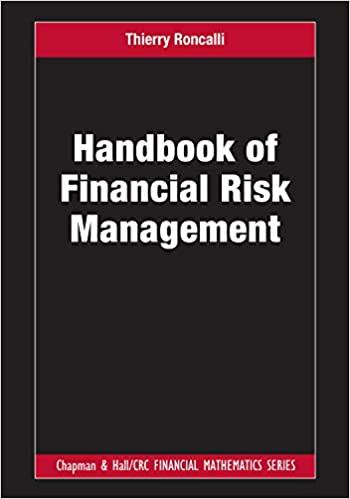Question
1-Find the present value of $800 due in the future under each of these conditions: 10% nominal rate, semiannual compounding, discounted back 4 years. Round
1-Find the present value of $800 due in the future under each of these conditions:
10% nominal rate, semiannual compounding, discounted back 4 years. Round your answer to the nearest cent.
10% nominal rate, quarterly compounding, discounted back 4 years. Round your answer to the nearest cent.
10% nominal rate, monthly compounding, discounted back 1 year. Round your answer to the nearest cent.
Why do the differences in the PVs occur?
2- Find the future values of the following ordinary annuities:
a)FV of $800 paid each 6 months for 5 years at a nominal rate of 4% compounded semiannually. Round your answer to the nearest cent.
b)FV of $400 paid each 3 months for 5 years at a nominal rate of 4% compounded quarterly. Round your answer to the nearest cent.
These annuities receive the same amount of cash during the 5-year period and earn interest at the same nominal rate, yet the annuity in part b ends up larger than the one in part a. Why does this occur?
3) You have saved $4,000 for a down payment on a new car. The largest monthly payment you can afford is $450. The loan will have a 12% APR based on end-of-month payments.
What is the most expensive car you can afford if you finance it for 48 months? Do not round intermediate calculations. Round your answer to the nearest cent.
What is the most expensive car you can afford if you finance it for 60 months? Do not round intermediate calculations. Round your answer to the nearest cent.
4) Future value: annuity versus annuity due
What's the future value of a 3%, 5-year ordinary annuity that pays $300 each year? Round your answer to the nearest cent.
If this was an annuity due, what would its future value be? Round your answer to the nearest cent.
5) An investment will pay $50 at the end of each of the next 3 years, $200 at the end of Year 4, $300 at the end of Year 5, and $550 at the end of Year 6.
If other investments of equal risk earn 9% annually, what is its present value? Round your answer to the nearest cent.
If other investments of equal risk earn 9% annually, what is its future value? Round your answer to the nearest cent.
Step by Step Solution
There are 3 Steps involved in it
Step: 1

Get Instant Access to Expert-Tailored Solutions
See step-by-step solutions with expert insights and AI powered tools for academic success
Step: 2

Step: 3

Ace Your Homework with AI
Get the answers you need in no time with our AI-driven, step-by-step assistance
Get Started


